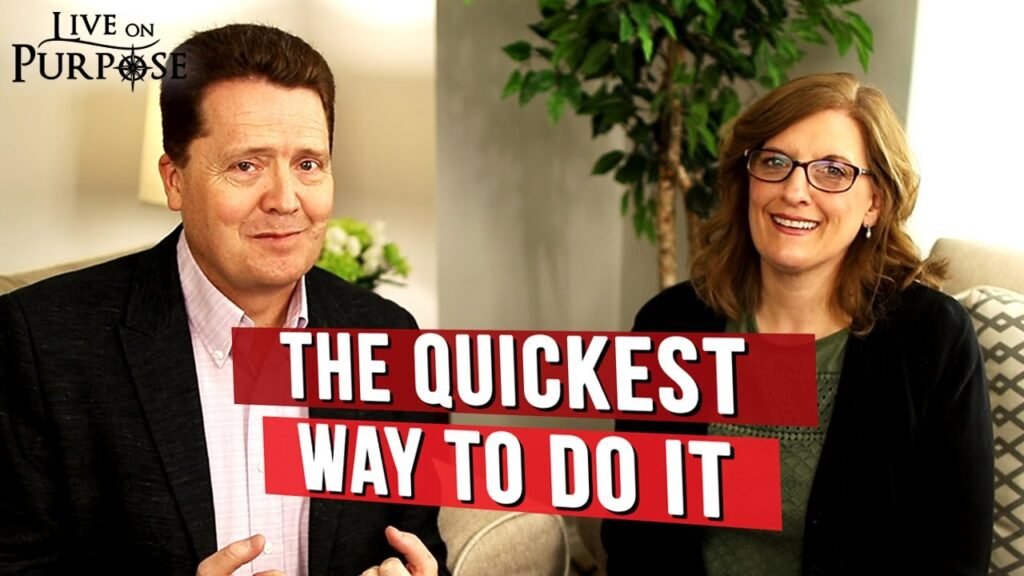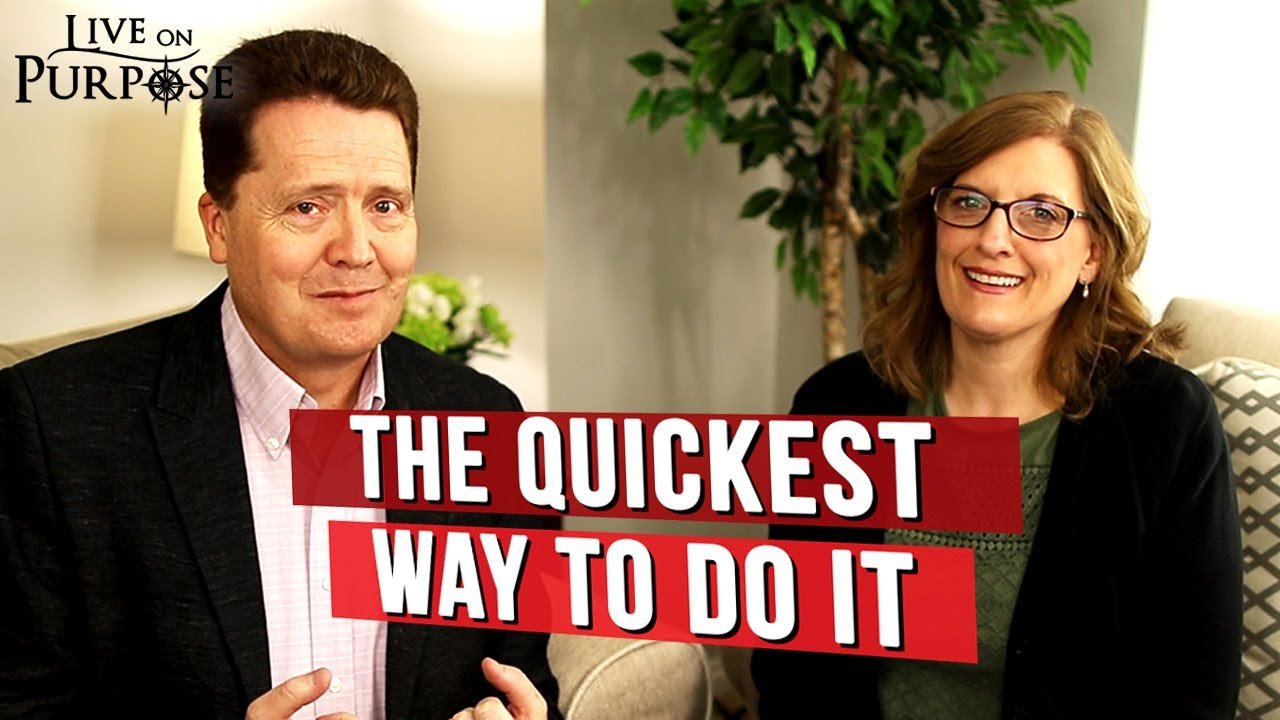In this article, “Managing Challenging Behaviors with Your Child,” we discuss effective strategies for staying calm amidst difficult situations with your child. We delve into the importance of understanding how the brain works, particularly the fight-or-flight response and the role of the limbic system. By recognizing that your child’s challenging behaviors are not personal attacks, but rather a result of their individual development, you can change your reactions and maintain a sense of calm. Additionally, we highlight the benefits of being part of a positive parenting community and the opportunity to access coaching groups and discovery calls for personalized support.
“How Do I Stay Calm With My Child?” is an informative video by Live On Purpose TV that addresses this common question. The hosts discuss the innate fight-or-flight response present in both parents and children and emphasize the significance of understanding how your own brain functions. They provide calming techniques, such as deep breathing, to counteract the injection of chemicals into your bloodstream during moments of stress. Furthermore, the video stresses the importance of accepting your child’s behaviors and understanding their developmental stages. By initiating a shift in mindset from expecting to accepting, you can approach challenging situations from a calmer perspective.

Understanding the Fight-or-Flight Response
The fight-or-flight response is a natural reaction that occurs in the brain when it perceives a threat or danger. It is an innate response that we all have, including children. Understanding how this response works and how it affects our bodies can help us stay calm in challenging situations with our children.
The division of responsibilities in your brain
Your brain is a complex organ that is responsible for numerous functions. Different areas of the brain have specific tasks and responsibilities. For example, the occipital lobe controls eyesight, the motor cortex controls movement, and the frontal lobe is responsible for rational thought and aspects of personality, such as forgiveness and empathy.
The role of the limbic system
One crucial part of the brain is the limbic system, which is located near the brainstem. The limbic system’s primary function is to keep us alive and safe. It controls essential functions like breathing and reflexes and plays a vital role in our fight-or-flight response. When our limbic system perceives a threat, it injects chemicals into our bloodstream to prepare us to either fight or run away.
Chemical release during the fight-or-flight response
When the fight-or-flight response is triggered, various chemicals are released into our bloodstream. These chemicals, such as adrenaline and cortisol, give us a burst of energy and heightened awareness. They can make us feel on edge, irritable, and ready for action. However, these chemicals have a half-life, meaning they only stay in our system for a limited amount of time.
Flush out chemicals through calming techniques
To help calm our bodies down and flush out these chemicals, we can practice calming techniques such as deep breathing. Slow, focused breathing can help reverse the chemical process and signal to our brain that the threat has passed. Taking deep breaths in through the nose, holding for a moment, and then exhaling slowly through the mouth can help us regulate our nervous system and bring us back to a calmer state.
Psychological Aspects of Staying Calm
Staying calm with our children can be challenging, but there are psychological factors that can help us in managing our reactions and maintaining a peaceful mindset.
Understanding child development
One key aspect of staying calm is having a solid understanding of child development. Knowing what to expect at different stages of your child’s growth and development can greatly influence how you react to their behavior. Recognize that certain behaviors, such as tantrums or defiance, are normal and expected at certain ages. By understanding what is developmentally appropriate, you can adjust your expectations and respond in a calmer manner.
Acceptance instead of expectation
Instead of expecting your child to act a certain way, practice accepting them for who they are in the present moment. Acceptance allows for greater understanding and empathy, and it can help shift your reaction from frustration to patience. Remember that your child is an individual with their own unique personality and strengths. Embrace their individuality and focus on nurturing their growth rather than trying to mold them into a preconceived idea.
Recognizing children as individuals
Recognize that your child is not a reflection of you or a possession. They are their own person with their own thoughts, feelings, and experiences. Understanding and respecting their individuality can help you approach challenging behaviors with compassion and open-mindedness. Instead of taking their behavior personally, try to see it as an opportunity for growth and connection.
Love and support as a parent
As a parent, your role is to love and support your child, even when you feel frustrated or challenged. Show your child that you are a safe and reliable source of love and support, no matter what. This can help them feel secure and can also help you stay calm in difficult moments. Remember that your love and reassurance can make a significant impact on your child’s emotional well-being.
Managing Challenging Behaviors
Challenging behaviors from our children can be difficult to handle, but by keeping a few key points in mind, we can navigate these situations more effectively.
The impact of violated expectations
When our expectations of how our children should behave are not met, it can lead to frustration and irritation. We may feel angry or disappointed, which can negatively impact our ability to stay calm. Recognize that unmet expectations are a normal part of parenting, and try to adjust your mindset to be more flexible and open-minded.
Remembering parental role and child’s individuality
In moments of challenging behaviors, remind yourself of your role as a parent. Your job is to guide and teach your child, not control their every action. Embrace their individuality and use challenging moments as opportunities for growth and learning. By approaching these situations with love and support, you can maintain a sense of calm and model healthy coping mechanisms for your child.
Staying calm in the face of challenging behaviors
Maintaining a calm demeanor can be challenging when faced with difficult behaviors from your child. However, by utilizing the calming techniques mentioned earlier and practicing self-care, you can better manage your emotions and reactions. Take a moment to breathe and ground yourself before responding to your child. Remember that your calmness can help de-escalate the situation and create a sense of security for your child.
Benefits of Positive Parenting Community
Being part of a positive parenting community can have numerous benefits in helping you navigate the challenges of parenting.
Support from like-minded parents
Joining a positive parenting community provides an opportunity to connect with other parents who share similar values and approaches to parenting. These connections can offer support, understanding, and advice when faced with difficult situations. Knowing that you are not alone in your struggles can bring comfort and reassurance.
Coaching groups for guidance
Many positive parenting communities offer coaching groups led by experienced professionals. These groups provide guidance and support in managing challenging behaviors and developing positive parenting strategies. Participating in coaching sessions can give you valuable tools and insights to help you stay calm and respond effectively to your child’s needs.
Opportunity for discovery calls
Some positive parenting communities offer discovery calls, where you can schedule a one-on-one conversation with a parenting expert. During these calls, you can discuss your specific challenges and receive personalized advice and strategies. This individualized support can greatly enhance your parenting experience.
Intimate parenting support experience
By engaging with a positive parenting community, you can create intimate connections and build relationships with other parents. This allows for a supportive and understanding environment where you can share your experiences and learn from one another. Having a network of like-minded parents can provide a sense of community and camaraderie that can help you stay calm and resilient.
Conclusion
Staying calm with your child may not always be easy, but it is a skill that can be developed and managed. Understanding the fight-or-flight response, practicing calming techniques, and embracing psychological aspects such as acceptance and understanding can greatly influence your ability to stay calm. Additionally, being part of a positive parenting community can provide the support, guidance, and sense of belonging that can make your parenting journey more enjoyable and fulfilling. Remember, staying calm is a journey, and with patience and practice, you can create a peaceful and loving relationship with your child.

